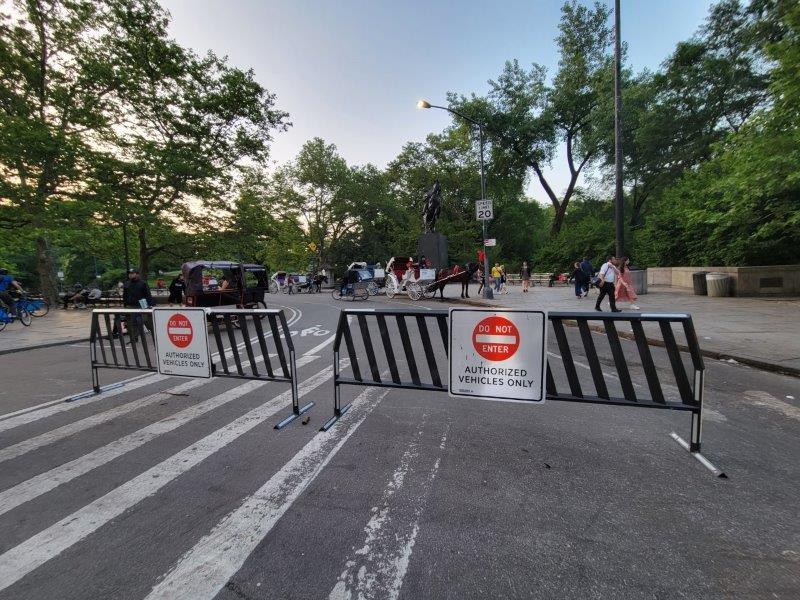Central Park, an 843 acre urban park located in the middle of Manhattan, is like a beloved backyard that all New Yorkers call their own. Nestled between Manhattan’s Upper West and Upper East sides, Central Park offers place and space for New Yorkers and tourists alike, welcoming 42 million visitors a year. While I do remember a time that driving was in fact allowed through Central Park not too long ago, driving in Central Park has not been permitted since June 2018.
Cars are no longer allowed on the drives in Central Park, and all of the park’s drives are permanently closed to public vehicular traffic. This means that the roads are now reserved for runners, walkers, cyclists, and other non-motorized forms of transportation, allowing nature to flourish in the middle of the concrete jungle that I call home.
Table of Contents
History of Driving in Central Park
Central Park, located in Manhattan, New York City, has a unique history when it comes to driving and the use of automobiles. In its early days, the park was a popular destination for the city’s wealthiest citizens, who would often participate in elaborate late-afternoon carriage parades. However, as time went on and automobiles became more common, the park began to see an increase in vehicular traffic.
In an effort to balance the needs of pedestrians, cyclists, and motorists, driving in Central Park has been subject to various policies and regulations throughout the years. For instance, at one time there were drive times, wherein cars were allowed to enter the park during specific hours, usually early morning and late evening, to reduce congestion and potential conflicts with park users.
However, environmental concerns about pollution and its impact on the park’s air quality have been a focus for many years, which led to a significant push for a car-free Central Park for the last couple of decades to enhance the experience of park-goers and to improve the park’s overall environmental health. In June 2018, Central Park became completely car-free, and roads have been closed to driving in general. The only exception to this is transverse roads that were originally built lower than Central Park’s surface, and run below it at 66th, 79th, 86th, and 96th Streets without disturbing the 843 acre expanse of Central Park.
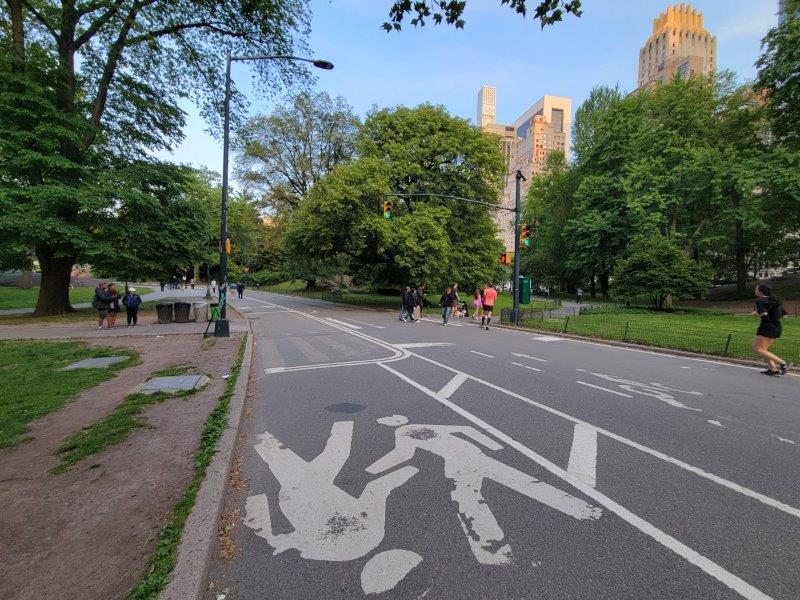
Central Park Drive
Central Park has four main drives, which are:
- East Drive, which is from 5th Avenue and Central Park South to Central Park North and Adam Clayton Powell Jr. Blvd. This spans the length of Central Park on the East Side.
- West Drive, which is from Central Park North and Adam Clayton Powell Jr. Blvd to Central Park South and 7th Avenue. This spans the length of Central Park on the West Side.
- Center Drive, which runs from 6th Avenue and Central Park South to the East Drive, and also links the West Drive to the East Drive.
- Terrace Drive, which runs from 72nd Street and 5th Avenue to 72nd Street and Central Park West.
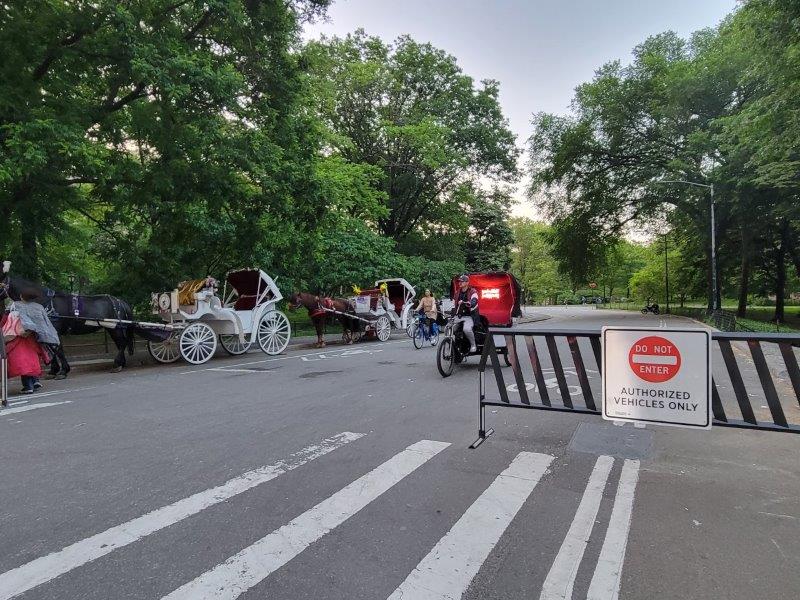
Central Park Drives used to be the main roads that facilitated traffic in Central Park before 2018. All four drives within Central Park are now traffic free, though the Central Park transverse roads that run crosstown at 66th, 79th, 86th, and 96th Streets are major roads connecting east and west Manhattan. It is interesting to note that the transverse roads actually run below Central Park’s surface so the Park is an uninterrupted expanse for its visitors, while also supporting the flow of traffic without actually entering Central Park.
In addition to the Central Park Drives, there is a 6.03-mile Central Park Loop which is created when Center Drive intersects with both the East Central Park Drive and West Central Park Drive, which is popular as a running, walking and cycling route in Central Park.
Non-Automobile Traffic in Central Park
Pedestrians and Runners
Central Park has become a haven for pedestrians and runners since cars are no longer allowed on the park’s drives since June 27, 2018. The Central Park Loop, and its shorter variations, provide a beautiful and tranquil environment for visitors to walk, jog, or run in Central Park without needing to worry about traffic. Pedestrians and runners can move in any direction, though runners are encouraged to run in a counter clockwise direction on the Central Park Loop.
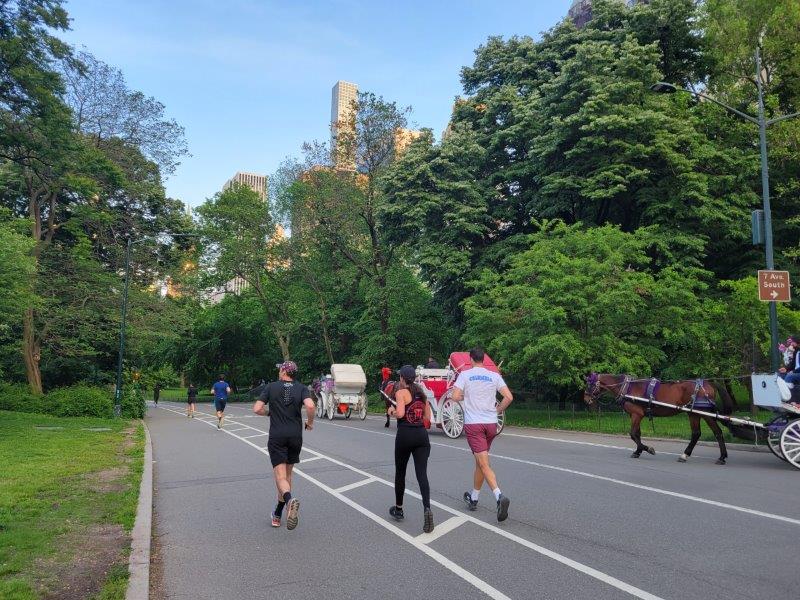
Cyclists and Bikers
Cyclists also benefit from the car-free zone in Central Park, where they are required to ride their bikes on the loop drives in a counter clockwise direction. Rollerblading is common as well as Central Park provides a safe and uncrowded space for people on their bikes or skates, with lanes marked off for pedestrian and biking traffic on the loops.
Horse Carriages
Horse carriages are an iconic part of the Central Park experience, offering visitors a unique and nostalgic way to tour the park. With the ban on automobile traffic, horse-drawn carriages are popular to help visitors navigate the park’s roads more safely, though there is an ongoing debate about the use of horses for these rides, and their treatment by their owners. Horse carriage drivers make great tour guides and offer a lot of information about the history of Central Park and its various attractions.
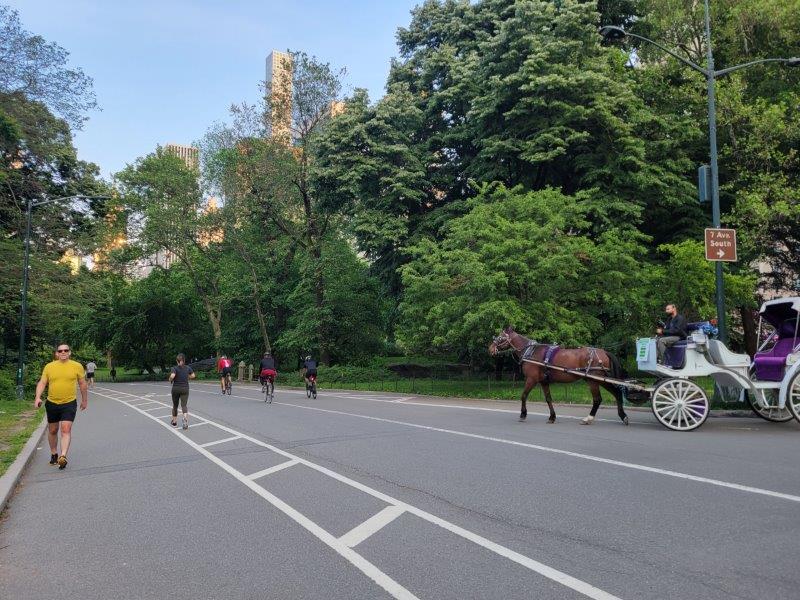
Pedicabs
Pedicabs offer an environmentally friendly and fun mode of in-park transportation, and are popular with tourists that wish to experience Central Park without needing to walk extensively through it. These human-powered tricycles provide a much-needed service for those looking to traverse larger distances within Central Park, ensuring that everyone can take full advantage of the park’s attractions without needing a car. Pedicab drivers make great tour guides and offer a lot of information about the history of Central Park and its various attractions.
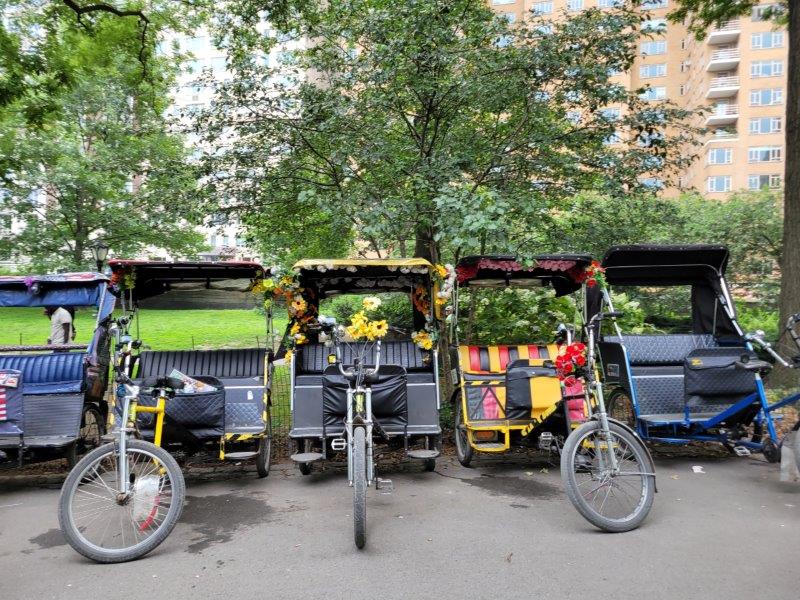
Impact of Ban on Driving in Central Park
The decision to ban cars from Central Park in 2018 was a significant one, which has had a considerable impact on the environment and the city’s efforts to reduce pollution. While the primary aim of the driving ban was to reduce pollution within the park and improve air quality by promoting alternative modes of transportation, such as biking, it has improved the ability of visitors to the park to safely navigate it without needing to worry about vehicular traffic.
Personally, I love being able to visit Central Park to get away from it all, and to connect with nature in its many forms in this oasis in the middle of our concrete jungle.

